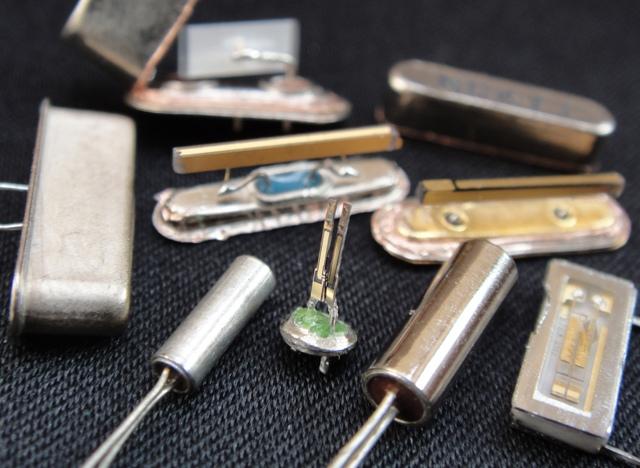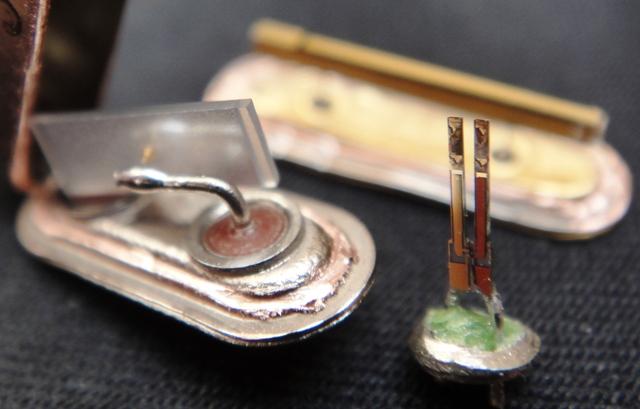Quartz
The race for quality and precision by mankind is usually beyond reason but the Quartz watch is one good example of reaching an optimal compromise. Quartz is a natural clear Earth crystal that vibrates when electrical current is applied - in scientific terms this property is referred to as piezoelectricity. Depending on the size, shape and current applied the quartz will oscillate in a defined and stable frequency acting as a perfect and constant timing source. This property was discovered by Pierre Curie in 1880 but commercial use began in the 1920/30's when the first quartz clock and timing signals were introduced. This technology was expensive and the size of a cabinet and was purely limited to industrial, military and scientific use. In effect it took another 50 years before miniaturization allowed to squeeze everything into a watch case.
The 1960 Accutron by Bulova was an early attempt with using a stable 360Hz oscillator (fork) in the wristwatch business but this purely electromagnetic approach reached a peak of 720Hz in the Omega Megasonic. Implementing higher and more precise frequencies was only possible with quartz but was limited by the lack of calculating logic integrated circuits (chips) that could divide the intensive quartz vibrations into smaller impulses that could be transformed into mechanical second intervals. Such micro-chips appeared in the late 1960's when CEH and Seiko introduced their wristwatch prototypes however we had to wait until the early 1970's when tiny affordable chips went into mass-production. Additionally quartz crystals in higher purity could now be artifically produced (grown) cheaper and faster in a chemical process giving room to more frequency variations.
In the early years of the quartz revolution we could experience several akward frequencies when leading manufacturers were trying to beat the competition. The neverending race for precision was nearly beyond reason when the basic values of 8192Hz, 9350Hz, 16.384Hz or 786.432Hz were superseded by a record breaking frequency of the most precise watch ever created - the Omega 2,4MHz MegaQuartz oscillating 2.359.296 times per second :)
Fortunately enough a moderate frequency of 32.768Hz (=215) was applied that allowed to reach a compromise between quartz size, power consumption, precision and cost. This optimal rate easily calculated/divided by simple circuitry was introduced by Girard Perregaux in 1970 and has ever since become a World standard in the watch industry.
Quartz technology was considered a short-lived phenomenon by most traditional watch manufacturers in the late 60's. Nevertheless with the outbreak of the Watch Wars in the beginning of the 1970's the Quartz Revolution became a threat to the entire watch industry leading to bankruptcy of dozens of reputable Swiss companies. The Japanese and American companies gained field for more than a decade while rapid progress in the Quartz field allowed everybody in the World to own a cheap and reliable timepiece by the end of the 1970's. Many microelectronics companies joined the market with the revolutionary digital display and solid state LED and LCD watches. These "digitals" with "no moving parts" did not have anything in common with a watch in technical terms and their inventors did not have to struggle with the miniaturization of mechanical parts and the rather long process of inventing a reliable and cheap stepping motor. In result "digitals" managed to outrun the old analog fashion and ruled the market for a few years. But somehow human nature and habits returned to the old analog display with hands and the modern Quartz market is more or less split in half.
This Quartz section is dedicated only to the pure mechanical watchmaking category of Analog Quartz watches and the efforts of traditional watch manufacturers in the Early Years of the Quartz revolution. Other Quartz watches like LED and LCD are described in more detail in their respective categories.



